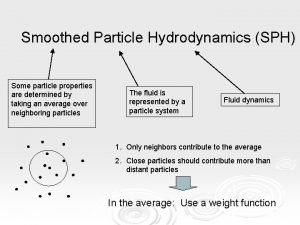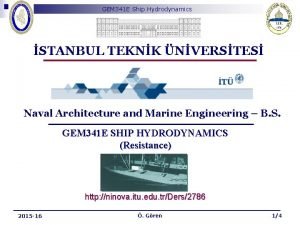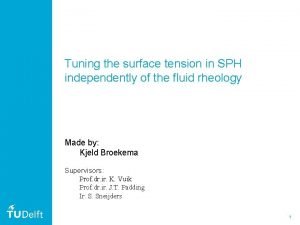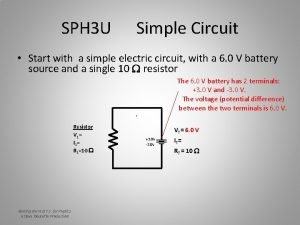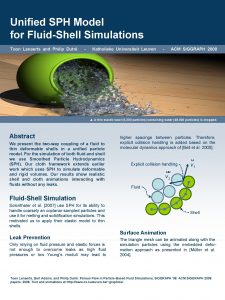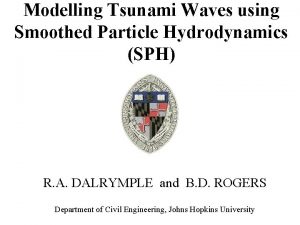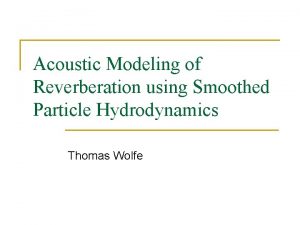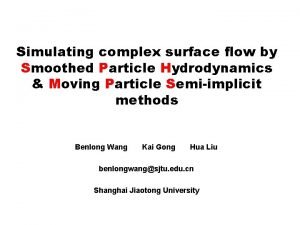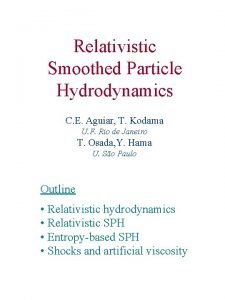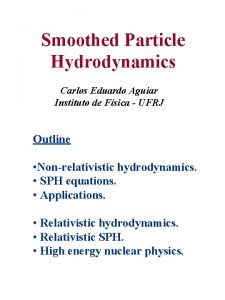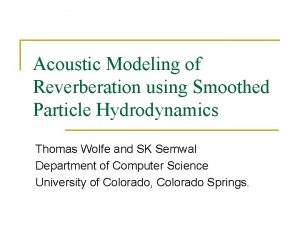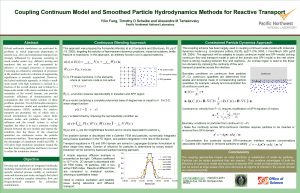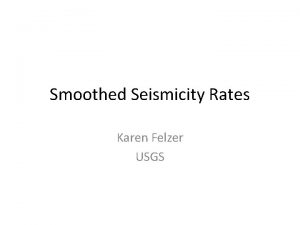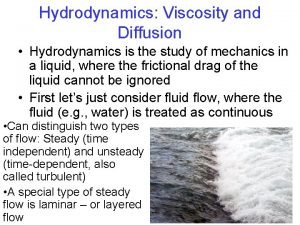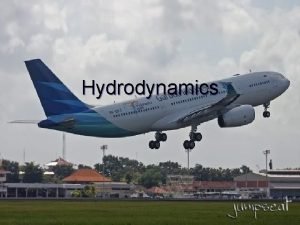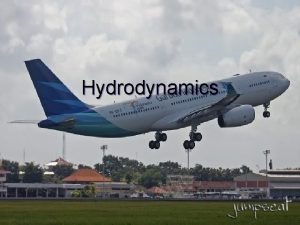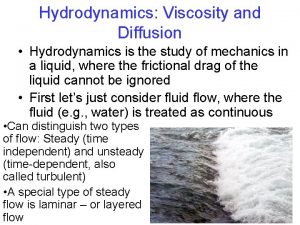Smoothed Particle Hydrodynamics SPH Some particle properties are



















- Slides: 19

Smoothed Particle Hydrodynamics (SPH) Some particle properties are determined by taking an average over neighboring particles The fluid is represented by a particle system Fluid dynamics 1. Only neighbors contribute to the average 2. Close particles should contribute more than distant particles In the average: Use a weight function

Before we consider the details… How do we describe our particle system? Each particle is specified by a state list: mass, velocity, position, force, density, pressure, color Particle i

The Goal The acceleration of a particle is Let us now learn how to set up the particle list…

Particle mass In our simulation we choose to have the same mass for all particles, mi = m The mass m is calculated by Note! Do not change the mass during the simulation

Let us now go back to the weighted averages… How do we determine the density of a particle? Weight function or Kernel function • The density calculation is done every time step • The neighbor list must be updated every time step

Surface tracking It is not trivial to know where the surface should be… We can find the surface by monitoring the density Ø If the density at a particle deviates too much compared to expected density we tag it as a surface particle Ø

Pressure We get the pressure from the relation: where cs is the speed of sound and ρ0 is the fluid reference density

Let us take a look on the particle property list again Ø The next property we focus on is the force Ø Velocities and positions are calculated from the forces in a way similar to an ordinary particle system Ø But before we go into that we need to learn more about taking averages…

In SPH we formally define averages in the following way: In practice we use a discrete version of this: Example Meshless method!!

Velocities and Forces Motion equation in elasticity: We also had: Now we instead use: All this together produces the following fluid equation called Navier-Stokes equation

Ø Our task is now to convert each term on the RHS in Navier-Stokes to SPH-averages Ø First term (pressure) becomes: where

Ø The second term (viscosity): where

Summary The acceleration of a particle can now be written:

For each time step: Ø Find neighbors to each particle and store in a list Ø Calculate density for each particle Ø Calculate pressure for each particle Ø Calculate all type of accelerations for each particle, and sum it up Ø Find new velocities and positions by using the same integration method as before…


The color property? What is the use of this property? l l We can use it to detect the position of the surface of our fluid We can also use it to find the normal vectors at the surface (important for rendering!) The normal vectors allow us to implement surface tension By adding several color fields we can for example implement a simple model of flame propagation

The color field Ø The color parameter is a quantity that is zero everywhere except at the particle where it has a finite value Ø Similar to how we calculated density we now calculate the average color at particle i as Ø Deviations of the color field show us where the surface is, and this case we choose to study the derivative of color field

Ø The gradient of a color field is Ø When the magnitude of the gradient is larger than a certain value, we tag the particle as a surface particle

Surface tension The force that tends to make surfaces smooth (like a drop of liquid) can be modeled in the following way: where and Note: If the magnitude of ni is small we can get numerical problem in the division above. To avoid this we only calculate if the magnitude of ni exceeds a certain threshold.
 Smoothed particle hydrodynamics
Smoothed particle hydrodynamics Antigentest åre
Antigentest åre Hydrodynamics of dogfish shark
Hydrodynamics of dogfish shark Talia weiss
Talia weiss Hydrodynamics
Hydrodynamics Gem
Gem Frother hydrodynamics
Frother hydrodynamics Thomas scaffidi
Thomas scaffidi Netgear sph
Netgear sph Sph surface tension
Sph surface tension Sph +3
Sph +3 Social work saxion
Social work saxion Sph cah toa
Sph cah toa Ohsu sph
Ohsu sph Sph toon
Sph toon Sph 4 inches
Sph 4 inches Some say the world will end in fire some say in ice
Some say the world will end in fire some say in ice Ice cream countable or uncountable noun
Ice cream countable or uncountable noun Some may trust in horses
Some may trust in horses Contact and noncontact forces
Contact and noncontact forces
